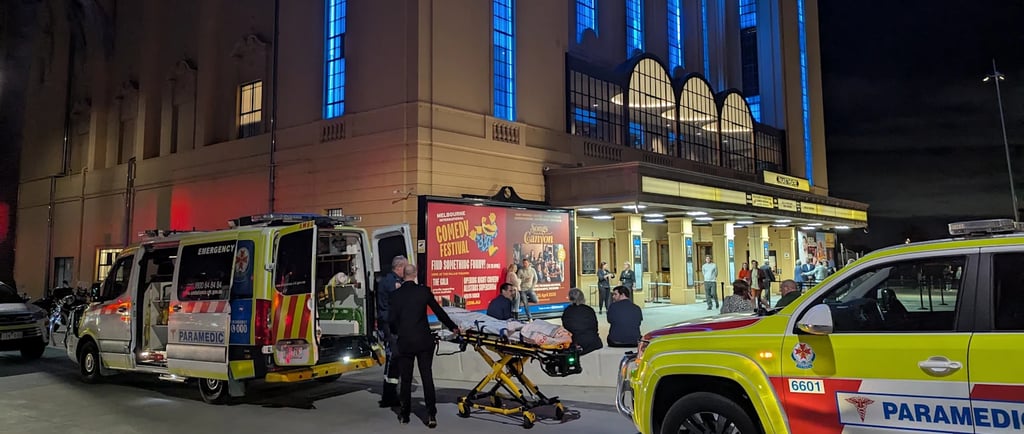"Stop the Show – There's a Man Dying": When a Missing AED Becomes a Matter of Life and Death
A recent incident at a Melbourne theatre highlights the urgent need for visible, accessible AEDs and better community preparedness
CARDIAC ARREST
Paul McFarlane
2 min read


A recent Sydney Morning Herald article has shaken many of us in the first responder and first aid community. Titled “Stop the show, there's a man dying”, it recounts the tragic collapse of a 58-year-old man during a performance at the Theatre Royal in Melbourne.
Despite the presence of three bystanders who happened to be health professionals, and who immediately began CPR, no one could locate a defibrillator. The venue reportedly has multiple AEDs on site, but in the moment they were needed most, they were invisible.
The article quotes a telling observation: “When this masthead attended a recent show at the theatre, there were no clearly marked defibrillators in the foyer, mezzanine level outside the theatre, or the dress circle.”
As the show was stopped and CPR continued for a full 20 minutes before paramedics arrived, the missing piece was glaringly obvious: a clearly marked and immediately accessible AED might have made all the difference.
This story raises some critical questions, and highlights four issues that can’t be ignored if we want to improve out-of-hospital cardiac arrest (OHCA) outcomes:
1. AEDs must be publicly accessible in high-use venues
It’s not enough to own an AED - it has to be usable in an emergency. That means installing it in a publicly accessible area, not tucked away behind locked doors or in staff-only areas. Venues like theatres, sporting complexes, and shopping centres must treat AEDs like fire extinguishers: essential, visible, and available to everyone.
2. Signage is critical as seconds count
Signage isn’t an afterthought. In the case of the Theatre Royal, even their own staff couldn’t find a defibrillator. This points to a clear failure in emergency preparedness. Green and white signage that complies with international standards should direct patrons to AEDs from multiple vantage points, ideally illuminated and visible in low light.
3. 80% of cardiac arrests happen at home
While public venues need better AED access, the majority of cardiac arrests don’t happen in public - they happen in people’s homes. If we truly want to improve survival rates, we need to normalise AEDs in the home, especially for people at higher risk due to age or cardiac history.
4. CPR training rates are still far too low
Only 5% of Australians are trained in first aid and CPR. That’s a frightening figure. In this case, the man was incredibly lucky that trained bystanders were present which gave him the best chance possible. But more widespread CPR training is vital. Every workplace, community group, and household should have at least one person trained and ready to act in an emergency.
What can we learn from this?
This tragedy could happen anywhere: a theatre, a footy field, a shopping centre, or your living room. That’s why at Responder Aid, we focus on three key things:
Installing more AEDs into public venues, workplaces, and homes
Making sure they can be found in seconds—not minutes
Encouraging more Australians to know how to act fast and effectively
Is your venue prepared?
If you’re a business owner, venue manager, school principal, or community organiser, ask yourself:
Do we have an AED?
Is it easy to find?
Do staff or regular users know how to use it?
If you're unsure or starting from scratch, Responder Aid can help.
🌐 https://responderaid.com.au/cardiac-arrest
We're here to help you save lives when every second counts.